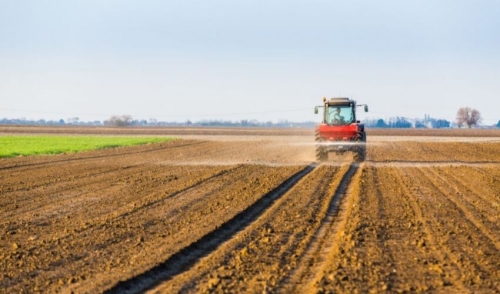
Seeding and Fertilizing Pastures
Is your pasture worn out and patchy? Is the cover thin and are unwanted plants encroaching on the space? Are your animals’ needs not being met when they graze? Seeding and fertilizing pastures can help keep fields in top condition to provide nourishing forage and a comfortable space for your horses, cattle, and other grazers.
Why Seed and Fertilize?
A pasture is much more than an open space with grass cover. When well-managed, your pasture can be a thriving, productive field that meets most or all of the nutritional requirements of its grazers, whether your horses, cattle, goats, sheep, alpacas, or other livestock are housed there. A healthy pasture will be a balanced blend of legumes for protein along with grasses for fiber and roughage, and the plant diversity will be enough to adequately meet the animals’ nutrient needs. Dense growth will keep weeds and unwanted plants from creeping into the pasture, and the land’s layout will provide proper drainage to ensure good watering without mold or fungus development.
Unfortunately, if a pasture is not managed properly or its animals change, it may no longer be as productive and nutritious. Seeding and fertilizing appropriately can recondition a pasture so it will once again be a prime space for nurturing your animals.
Best Times for Seeding and Fertilizing
Seeding and fertilizing pastures can be done at nearly any point in the year, depending on the plants grown and the overall condition of the field. Mid-winter treatments are not typically possible due to frozen ground, however, and mid-summer treatments are often ineffective because of moisture requirements and overheating. Similarly, late spring treatments may be washed away by spring rain runoff, while late fall seeding and fertilizing may not have enough time to mature and stabilize before hard freezes begin. Late winter through early spring, as well as late summer through early fall, are the best times for seeding and fertilizing to optimize growth and jumpstart richer plant life for better grazing.
Check the Soil First
It isn’t enough to toss seed or fertilizer on your pasture and hope for improvement – it is essential to test the soil to be sure it is in top condition to nourish the right grasses and legumes for your fields. A soil test should cover pH values, compaction, soil composition, nutrient components, organic matter, insect populations, and other characteristics. If the soil is not suitable for the plants you hope to grow, you can adjust your fertilizer regimen to improve the soil, use equipment to adjust land contours and improve drainage, dethatch the soil to aerate the surface, and take other steps to improve its condition. In extreme cases, it can take several months to adjust soil prior to planting, so be sure you have adequate time to condition the soil to suit your planting needs.
Choose the Best Plants
Not every pasture will be able to nourish every desired plant, and it is important to select the right legumes and grasses for your pasture not only to meet your animals’ needs, but that will thrive in the available field. It may also be necessary to take steps to eliminate unwanted weeds before seeding to minimize competition for the soil’s nutrients and moisture. When selecting plants, consider the following factors:
- Types of animals that will be grazing in the pasture
- Soil condition and suitability for selected plants
- Overall climate, including precipitation and sunlight
- Number of animals to be grazed in the field
- Changing nutritional needs as animals age or breed
- Plant growth rates and habits compared to field size
Choosing a blend of suitable plants will help encourage diversity in your pasture and will increase successful growth, as well as provide better overall nutrition for your grazers.
Be Patient With Pasture Management
It can be tempting to let grazers back into a pasture as soon as new growth appears, but it can take several weeks or months for new plants to become firmly established in the field. If the plants are overgrazed before they are established, they will not regrow well and your time, effort, and expense will have been wasted. Instead, be patient and allow several growth and trimming cycles to pass as the plants mature, and monitor new growth carefully for pests, diseases, root development, weeds, and overall health. Fertilizing and reseeding only part of a pasture at once while rotating your animals to different fields can help ensure plenty of time for the new growth to get established.
Seeding and fertilizing pastures can be a tricky process, especially if you are changing which animals use which fields or if the pastures have been poorly managed in the past. By taking care to thoroughly evaluate the pasture and treat it appropriately for the soil’s ability and the animals’ needs, as well as being patient as the new plants grow, you’ll enjoy many seasons of lush, healthy growth and nutritious grazing to come.
